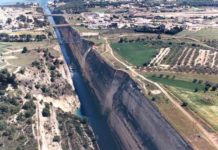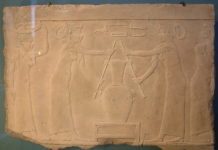The Army had been detailed to help the Post Office with an experimental project to inaugurate airmail in America. This was the first regular airmail route in the world.
On May 15, 1918 the United States Post Office Department (later renamed the U.S. Postal Service) started the first regular airmail delivery in the world. Stops on the route included Washington, Philadelphia, and New York. Airmail stamps for this early route cost 24 cents, and by orders that may have originated with President Woodrow Wilson, Army pilots and planes were to fly the route for the first three months. America was involved in WW I, and Commanders in Europe were complaining that newly-trained pilots did not have enough flying experience. Flying the mail routes was suggested as a possible solution for this problem. Congress had appropriated $100,000 for developing experimental airmail routes, but there were few pilots and planes capable of taking on the mission – probably the real reason the job fell to the Army Air Corps.
Even the Air Corps did not have planes capable of flying the projected distance, but Jennies made for training pilots were quickly modified with larger engines and extra fuel tanks. There were numerous crash landings and navigational difficulties. The compasses of the time were not dependable in proximity to the metal of the airplane’s engines. Following railroad tracks and roads on the ground was the best way for pilots to be sure they got where they wanted to go. Running out of fuel and gliding to earth to borrow or buy gas from farmers was common in these early days of airmail.
Despite the difficulties the three-month experiment was generally deemed a great success after the first month. The Post Office issued a press release proclaiming that 10,800 pounds of mail had been flown over 1,000 miles at an average speed of 70 mph. When the three months was up the Army was relieved of this duty, and commercial contracts were sold for the new airmail service. Before long, a transcontinental route had been established and radio aids to navigation and better instruments were introduced. Early airmail contracts became the basis for several early airlines.
Airmail soon got a boost from none other than Charles Lindbergh, who pioneered high-altitude flying to save fuel. Like aviation technology in general, airmail planes improved rapidly. WW I and WW II are generally credited with accelerating man’s understanding of what was aerodynamically possible. From rigged up Jennies carrying a mailbag in what had been the trainer’s seat, to jumbo jets carrying tons of mail was a relatively short evolution. By 2007, airmail is almost taken for granted, and overnight delivery is usually guaranteed.








